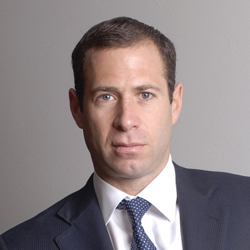Over the past year, New York’s real estate industry has seen a real peer-to-peer lending boom. A flurry of development firms have launched mezzanine and other debt platforms since mid-2015, blurring the line between lenders and borrowers. The most recent newcomers to the developer-lender arena include Kushner Companies [TRData], RXR Realty, Moinian Group and RFR Realty, which joined earlier incumbents such as SL Green Realty Corp., and observers say more will likely follow.
“It’s a very recognizable trend right now,” said Adi Chugh, managing partner at the New York debt and equity brokerage Maverick Capital Partners. “I get a lot of calls from developers looking to buy debt notes.” Chugh added that while mezzanine loans are particularly popular, developers have also begun offering senior debt.
The model offers obvious advantages to both borrowers and lenders, but it also comes with plenty of challenges — from a potential rise in foreclosures to the various risks of short-termism. And it raises the question: Is the developer-lender a temporary phenomenon or is it here to stay?
What’s driving it?
The much-talked-about retreat of banks and other traditional lenders from construction finance has created an opening for developers to enter the fray and make relatively high returns on their loans.
“This is one of the best times in the cycle to be a structured capital provider,” said David Eyzenberg, head of the real estate investment banking firm Eyzenberg & Company and until recently a capital markets broker at Avison Young.
Property market conditions also play a big role. Most observers expect the New York real estate business to slow down over the coming year, but rising land prices have yet to adjust, making it harder for developers to find attractive equity investment opportunitites.
“As things get more expensive the feasibility of transactions goes down,” said Bob Knakal, who heads Cushman & Wakefield’s New York investment sales division.

In such cases, issuing debt often serves as a Plan B, according to industry players. “We are seeing folks that have excess cash they need to deploy and that are not finding buying opportunities at a price they like,” said George Doerre, a team leader in M&T Bank’s New York commercial real estate group. He explained that many developers could be more comfortable lending on up to 80 percent of a project’s value and occasionally higher than buying a property outright at current prices. Doing so allows those developers to stay on the safe side if the market drops, Doerre noted.
Compared to senior debt, mezzanine loans come with higher returns and typically place the lender first in line to take over the property in the event of a default. But peer-to-peer lending also has its advantages for borrowers. For one, fellow developers are often more flexible and less bureaucratic than traditional lenders. Personal relationships between developers also ensure that loans can be secured swiftly in off-market deals, observers say.
And having a fellow developer on board as a mezzanine lender can make it easier to secure a senior bank loan when needed. It is often reassuring for a senior lender to know that a mezzanine lender could step in and continue the project if the borrower defaults, Doerre said. “Having a developer involved won’t fix an intrinsically bad deal, but there is something to be said about a true developer as a mezzanine lender versus a bunch of pure finance folks,” he added.
In some cases, developers can actively help secure further financing. RXR CEO and Chairman Scott Rechler told The Real Deal that the real estate giant works with its borrowers in negotiations with other construction lenders and “helps them think through the balance of the capital structure.” Doing so allows the firm to act as a partner and “not just a lender,” he said.
“I could see us doing another $1 billion of deals this way,” Rechler added.
Who’s doing it?
There are three main groups of developer-lenders. One is major public companies such as Vornado Realty Trust and SL Green, the latter of which held $1.33 billion in real estate loans on its books as of March 31. Another group is made up of private companies that launched investment funds to buy and originate mezzanine and other loans, such as RXR, which did its first major debt deal in March, and Mack Real Estate Group, which launched its direct lending platform Mack Real Estate Credit Strategies in the fall of 2014. The third group consists of private development firms that invest their own equity in the form of debt, such as Aby Rosen and Michael Fuchs’ RFR, Kushner Companies and Fisher Brothers, which bought a stake in the privately run Modern Bank in 2009 to get into the mortgage business.
Laurent Morali, president of Kushner Companies, said the firm is looking for deals primarily in the New York metro area above $30 million and will “expand strategically.” “We realized getting into lending would allow us to still invest while getting attractive risk-adjusted returns,” he said. “By being a lender, we can stay active in a market that doesn’t necessarily always agree with our equity valuations.”
These developer-lenders are making inroads where traditional lenders have retreated the most within the past year, observers say — in ground-up residential construction, transitional properties and hotels.
In March, RXR issued a $463.2 million mezzanine loan package to fellow developer Extell Development. The funds will go toward the construction of the Lower East Side condo tower 250 South Street and two rental projects at 500 East 14th Street and 555 10th Avenue, according to a regulatory filing cited by Bloomberg. Last year, Vornado, SL Green and Oxford Properties Group partnered up on a $100 million mezzanine deal to finance HFZ Capital’s acquisition of a condo development site straddling the High Line at 518 West 18th Street.

Mark Weiss
And in October 2015, Mack Real Estate Credit Strategies funded Kuafu Properties’ acquisition of a development site at 151 East 60th Street with a $200 million senior loan. That same month the fund also issued a $55 million acquisition and predevelopment loan to finance Madison Equities’ acquisition of the FiDi development site 45 Broad Street.
Meanwhile, RFR chose an existing hotel for its first debt investment. In February, the company bought a $60 million performing mezzanine loan on the Mark Hotel on the Upper East Side. “We own three hotels in New York, so it was easy for us to underwrite,” said Mark Weiss, RFR’s chief investment officer, adding that the company’s retail holdings in an adjacent building also gave it a good handle on the property’s value.
Other developers are buying up distressed loans with plans to take over the properties. The Durst Organization recently moved to foreclose on Bruce Eichner’s East Harlem development site at 1800 Park Avenue after buying a $66 million non-performing high-interest note on the property from Garrison Investment Group. But the company later abandoned the foreclosure plans and instead reached a deal to buy the property from Eichner — avoiding a lengthy and potentially messy legal process.
Madison Realty Capital is another real estate firm known to take control of properties by buying loans. In January, a borrower sued the company for “predatory lending” after it tried to foreclose on seven properties in Greenpoint. A representative for Madison declined to comment.
As the market changes, sponsors with a more predatory edge may smell blood in the water.
“What excites me is the distressed business today,” developer Steve Witkoff said at a May conference hosted by WeiserMazars. “And I wish it didn’t because I think there’s going to be plenty of it. That’s where there’s going to be the greatest opportunity.”
When does it get messy?
For all the potential advantages of lending to their peers, there are also some developers who shy away from it.
David Becker, a managing director at Time Equities, told TRD that the company doesn’t issue mezzanine loans, since the returns available on such loans aren’t worth the inherit risks of subordinate lending. And dealing with borrowers’ defaults can become a messy affair for development companies that would rather spend their time and resources elsewhere. “We don’t like chasing people down and being litigious,” Becker said.
Russ Schildkraut, a principal at Ackman-Ziff Real Estate Group, explained that developer-lenders can sometimes be faced with restrictive contract clauses if they are perceived as predatory. “If you’re viewed as a loan-to-own lender and you’re viewed as doing everything you can to get to an asset, the loan terms become very difficult,” he said.

The Mark Hotel
For borrowers, one fear is that developers who are able to take over a property in the event of a default may be a bit too keen to do just that, said Ari Hirt, a broker at Mission Capital Advisors. Some sponsors may prefer to borrow from a private equity firm with that in mind, Hirt pointed out.
For all of the developer-lenders who insist they are in it to help their borrowers, there are those who lend at terms that are likely to end in default. As developer Joseph Beninati of Bauhouse Group assembled sites and began pre-development work for a 950-foot tall condo tower on East 58th Street last year, he borrowed $147.5 million from fellow developer Gamma Real Estate. The de-facto interest rate, including exit fees, amounted to 30 percent, according to Crain’s New York Business. Beninati defaulted by January 2016 and is currently battling foreclosure in bankruptcy court.
“It seems Gamma was prepared to take that property,” one real estate insider said on the condition of anonymity.
But the majority of developer-lenders don’t issue loans with the explicit intention of taking over a property through foreclosure, according to those in the business. And most insist that they want to avoid any defaults. “Our approach is to participate where we could be partners with the sponsor and not be predatory and not get into highly leveraged deals,” Rechler said.
Still, developers admit that they are prepared to take over properties and continue projects in the event of a default. This preparedness limits their downside risk on the loan and is a key competitive advantage vis-à-vis Wall Street lenders.
“We don’t look at these [kinds of deals] as necessarily loan-to-own,” said Weiss. “We think they are terrific yields and we think if there is a problem we have the assets to go in and finish the development.”
A second problem for borrowers is that unlike certain banks and funds, developer-lenders may not necessarily be in it for the long run. “A development company might be more inclined to flip their position and sell to someone else, and you never know who they’re going to be,” said New York-based real estate attorney Joshua Stein.
The big-picture concern with the growing number of developers originating loans is that it may amount to a vote of no confidence on certain parts of New York’s real estate market. Individual cases differ, but if a developer would rather lend on up to 80 percent of a property’s value rather than buy it outright at current market prices, it implies a lack of faith that profits can still be made on that property.
“I would say that there’s a bunch of signs that the market is ready for correction,” Stein noted. “And this trend is one of them.”
Does the model have a future?

Richard Mack
Mezzanine lending is all the rage among developers, in large part because the conditions are right: Rates on mezzanine debt are high, borrowers are plentiful and taking over properties on the cheap is a growing possibility. But will the developer-lender remain a widespread phenomenon if lending-market conditions change?
Richard Mack, for one, is skeptical. “What you’re seeing out there today is that people are being opportunistic,” he said. Though Mack told TRD in May that he believes more private real estate firms will get into the lending business, he clarified more recently that many will only do so on a temporary basis.
Mack Real Estate Credit Strategies is a business he hopes will be around for the next 50 years, he said, noting that many other developers don’t have a long-term strategy. Whether they will stay in the lending market depends on how capital markets change, Mack explained. If real estate prices fall and returns on equity rise, that could drive many developers out of the lending business, he added.
At the same time, Mack described the current trend as part of a broader trajectory that has taken shape over several decades. Since the 1970s, the rise of private investment funds and public real estate companies has increasingly blurred the line between developers, owner-operators, investors and lenders, he said. “The current state of affairs is a reaction to the continued evolution of real estate capital markets,” Mack noted.
RFR’s Weiss said he is unsure how much longer capital markets will offer developers a favorable environment to double down as lenders. But as long as they do, he sees additional opportunities.
“I’m certainly not counting on the dearth of financing lasting for years,” he said. “You want to make hay when you can.”
